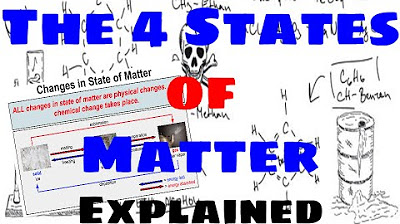Introduction to Maps [AP Human Geography Unit 1 Topic 1] 1.1
Summary
TLDRIn this educational video, Mr. Sin introduces viewers to AP Human Geography, emphasizing the importance of understanding different types of maps and their strengths and weaknesses. He discusses thematic maps, reference maps, and the concept of distortion, urging students to analyze maps critically to avoid misleading conclusions. The video also includes a pop quiz to test comprehension and encourages further exploration of map projections and thematic maps in additional resources.
Takeaways
- 📘 Start of a new school year focusing on AP Human Geography.
- 🗺️ Introduction to the importance of maps in geography, highlighting their different types and uses.
- 🔍 Maps present information with different strengths and weaknesses, crucial for analysis and understanding spatial relationships.
- 🌐 Thematic maps focus on one theme and use data to illustrate patterns and connections, while reference maps help with navigation without a specific theme.
- 📊 Maps can illustrate a wide range of data, from simple directions to complex socio-economic and environmental issues.
- 🔢 Understanding the difference between absolute distance (quantitative) and relative distance (qualitative) is key when analyzing maps.
- 📏 Awareness of map distortion is essential, as it can affect direction, distance, shape, and area representation.
- 🌍 The Mercator map projection is an example where distortion can misrepresent the size of landmasses, like Greenland appearing larger than Africa.
- 📈 Thematic maps can also have distortions due to decisions made in data presentation, scale, and generalizations.
- 🔑 When analyzing maps, consider the title, legend, shading, colors, symbols, compass rose, scale, and the relationship between items to understand what the map is conveying.
- 📝 The script encourages active learning through pop quizzes and emphasizes the importance of reviewing supplementary materials on map projections and thematic maps.
Q & A
What is the main focus of the video script?
-The main focus of the video script is to introduce and discuss the importance of maps in AP Human Geography, including different types of maps, their strengths and weaknesses, and how to analyze them.
What are the two main types of maps mentioned in the script?
-The two main types of maps mentioned are thematic maps, which focus on one theme and use data to illustrate patterns and spatial connections, and reference maps, which are used for navigation and do not present a specific theme.
Why is it important to identify the strengths and weaknesses of a map?
-It is important to identify the strengths and weaknesses of a map to ensure accurate analysis and to avoid drawing incorrect conclusions from the data presented.
What is a chloroplast map and why is it significant in geography?
-The term 'chloroplast map' seems to be a mistake in the script. It might be a mispronunciation or confusion with 'choropleth map', which is a type of thematic map that uses color to represent data variables for different areas.
How can maps be used to understand complex issues?
-Maps can be used to visualize data and trends, allowing for the identification of patterns and spatial relationships that can help in understanding complex issues such as birth rates, poverty, education, and trade with other countries.
What is the difference between absolute distance and relative distance on a map?
-Absolute distance deals with quantitative terms, such as miles or kilometers, indicating the exact distance between two points. Relative distance, on the other hand, deals with qualitative terms like time taken to travel or direction using a compass rose.
What is distortion and why is it a concern when using maps?
-Distortion refers to the inaccuracies that occur when representing a three-dimensional globe on a two-dimensional surface. It can affect direction, distance, shape, and area, and is a concern because it can misrepresent the true nature of geographic features.
Why might the size of Greenland appear larger than Africa on a Mercator map?
-The Mercator map projection distorts the size of areas towards the poles, making Greenland appear larger than Africa, despite Africa being significantly larger in reality.
What is the importance of scale in thematic maps?
-Scale is crucial in thematic maps as it determines the level of detail and accuracy of the data presented. A small scale map may generalize data, while a large scale map can show more detailed and accurate information.
What are some aspects to consider when analyzing a map?
-When analyzing a map, consider the title, legend, shadings, colors, symbols, compass rose, scale, and the relationship between items on the map and the earth's surface to understand what the map is showing.
What is the purpose of the review questions at the end of the video script?
-The review questions serve as a pop quiz to check the viewer's understanding of the main components discussed in the video and to reinforce the learning experience.
Outlines

Esta sección está disponible solo para usuarios con suscripción. Por favor, mejora tu plan para acceder a esta parte.
Mejorar ahoraMindmap

Esta sección está disponible solo para usuarios con suscripción. Por favor, mejora tu plan para acceder a esta parte.
Mejorar ahoraKeywords

Esta sección está disponible solo para usuarios con suscripción. Por favor, mejora tu plan para acceder a esta parte.
Mejorar ahoraHighlights

Esta sección está disponible solo para usuarios con suscripción. Por favor, mejora tu plan para acceder a esta parte.
Mejorar ahoraTranscripts

Esta sección está disponible solo para usuarios con suscripción. Por favor, mejora tu plan para acceder a esta parte.
Mejorar ahoraVer Más Videos Relacionados

The Four States of Matter - Explained

Lab Equipment - Explained

3. Gr 11 Life Sciences - Population Ecology - Theory 3 Mark Recapture Method

4. Gr 11 Life Sciences - Population Ecology - Worksheet 1

PENJASKES KELAS X - SOFTBALL

Introduction to Culture [AP Human Geography Review Unit 3 Topic 1]

Menentukan Mr ( massa molekul relatif )
5.0 / 5 (0 votes)
